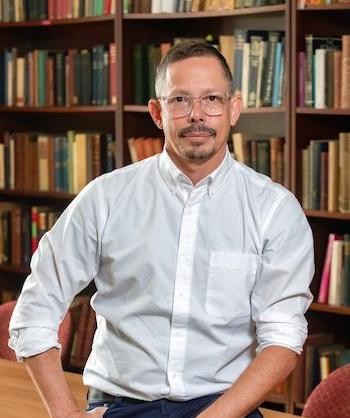
What is the context for this course?
My course Senecan Tragedy: Medea Nunc Sum was aimed at students with a minimum of two years of Latin experience at the college level or those who had studied a substantial amount of the language at high school (such as AP Latin). For this iteration of the course eight students enrolled – including three freshmen! Students read up to 110 lines of Latin poetry per week as well as approximately 30–40 pages of secondary scholarship.
As Seneca’s Medea wrestles with committing the ultimate act of vengeance, the murder of her own children, she recognizes that she has become the figure she was always destined to be famously saying ‘now I am Medea’ and so simultaneously acknowledges her mythic and literary pedigree while preparing to commit her trademark outrage upon the Roman stage. In my course students read the entirety of Seneca’s tragedy Medea in Latin, comparing this imperial Roman portrayal of the Colchian sorceress to her earlier Greek incarnations and examining the elemental force of her anger through reading portions of Seneca’s philosophical treatise On Anger.
Why did you choose to use a creative assignment?
It is easy to forget when studying ancient tragedies that they were created not to be read but rather to be seen and heard in performance (though for Seneca’s dramas scholars debate fiercely about how, or indeed whether, these plays were originally produced for the stage). For Medea Nunc Sum I designed a creative project that would necessitate the students turning the Latin text on the page into a lived, performed experience in the form of a YouTube video.
Students were tasked with selecting 30–50 lines of the original Latin text and filming a short scene performed in Latin with their own English translations provided as subtitles (each video came in at around 4–5 minutes). In addition to getting students to consider more deeply how an ancient text might be embodied and engage an audience successfully, I designed this assignment for students to work more closely with a short portion of Seneca’s text, to hone their translation skills, and to get experience of speaking Latin in a dynamic and meaningful manner.